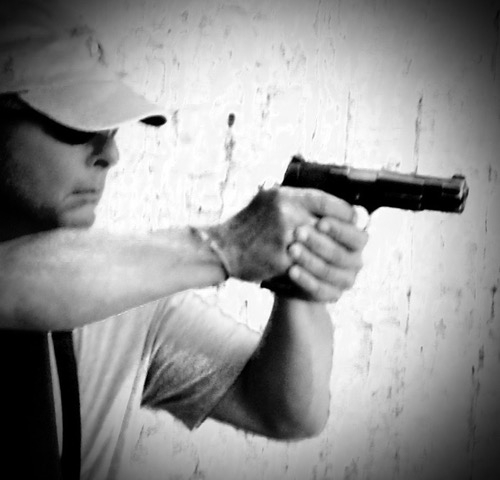 |
The introduction of law enforcement and military tactics into the defensive/concealed carry world has blurred the lines, especially when it comes to the goal of the armed citizen. Your goal in a defensive confrontation is to break contact as soon as possible, disengage and find a location that you can hold, and if necessary, defend.
The first tactic in defense is to avoid and escape. Maintain awareness, move – your first response to signs of trouble – and issue verbal commands as required. Your directives carry a lot more weight when there’s a firearm in hand – in a safe, low-ready position. Safety Rule II – Never point the muzzle at anything you’re not willing and ready to shoot. This includes “potential” threats.
Your movement should position you in a safer spot, behind cover/protection and allow an easy defense. A “fatal funnel,” which limits movement of the threat. “But,” they say, “I’ll be trapped.” Remember, one skilled person, willing and in a defendable location can easily succeed against multiple attackers.
The same doctrine applies to home defense. I hear a lot of, “I heard a noise somewhere in the house/garage/yard and grabbed my light and pistol to see what was going on” stories. Usually from people who readily admit they don’t have any training. It makes me cringe, every time. Unless there’s something worth risking your life in the house/garage/yard then avoid, escape and find somewhere you can hold and defend. “But,” they say,” it’s my house/garage/yard.” Don’t let your ego put you into a life and death situation. Your death, someone else’s death … it’s not worth it.
Trouble and danger are often sudden. Not completely unexpected -- because we should always be aware of the possibility -- but instantaneous, with little or no warning. The situation can turn physical. They are trying to choke, hit, cut or shoot you. The only way to prevent this is with an aggressive defense, physically stopping the attack. You’re in a fight. Yet, even when you’re applying aggressive actions, it’s still a defensive situation. Be careful about letting the reptilian part of the brain take control. There’s no conscious thought or decisions occurring there, and it will take you way past what would be considered a “reasonable” response.
Again, as soon as possible, you get free from the situation – either the threat leaves or is down, providing you with the opportunity to break away to a safer location. If the situation does escalate, you’re in a strong position of defense.
Judicature, the administration of justice, is the responsibility of the authorities. We do everything possible to avoid and escape. If it’s necessary to fight, it must be aggressively. But, at the first opportunity it’s time to break contact, disengage and find a safe place to defend.
Of course, this doesn’t happen naturally. Preparing for defense takes training, an introduction to the proper skills and techniques. Plenty of practice is required to actually learn this system; repetition is mandatory to applying it under stress. Above all it’s about developing the proper mindset and the ability to make life and death decisions in fractions of a second. Especially making the decision on when to break contact, disconnect and get to safety.
Tiger McKee is director of Shootrite Firearms Academy, which is celebrating its twenty-fifth anniversary. He is the author of The Book of Two Guns, AR-15 Skills and Drills, has a regular column in American Handgunner and makes some cool knives and custom revolvers. Visit Shootrite’s Facebook page for other details.